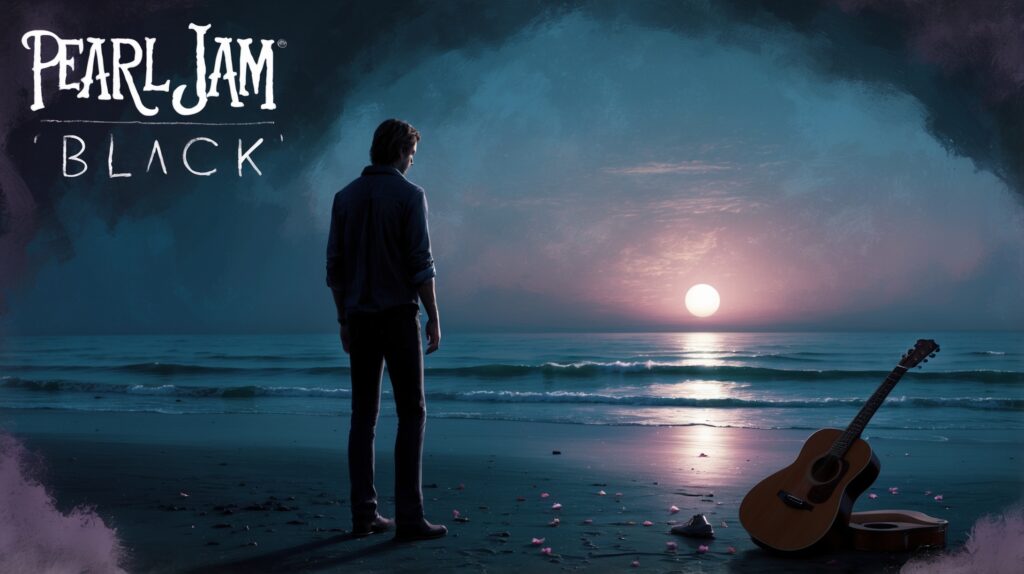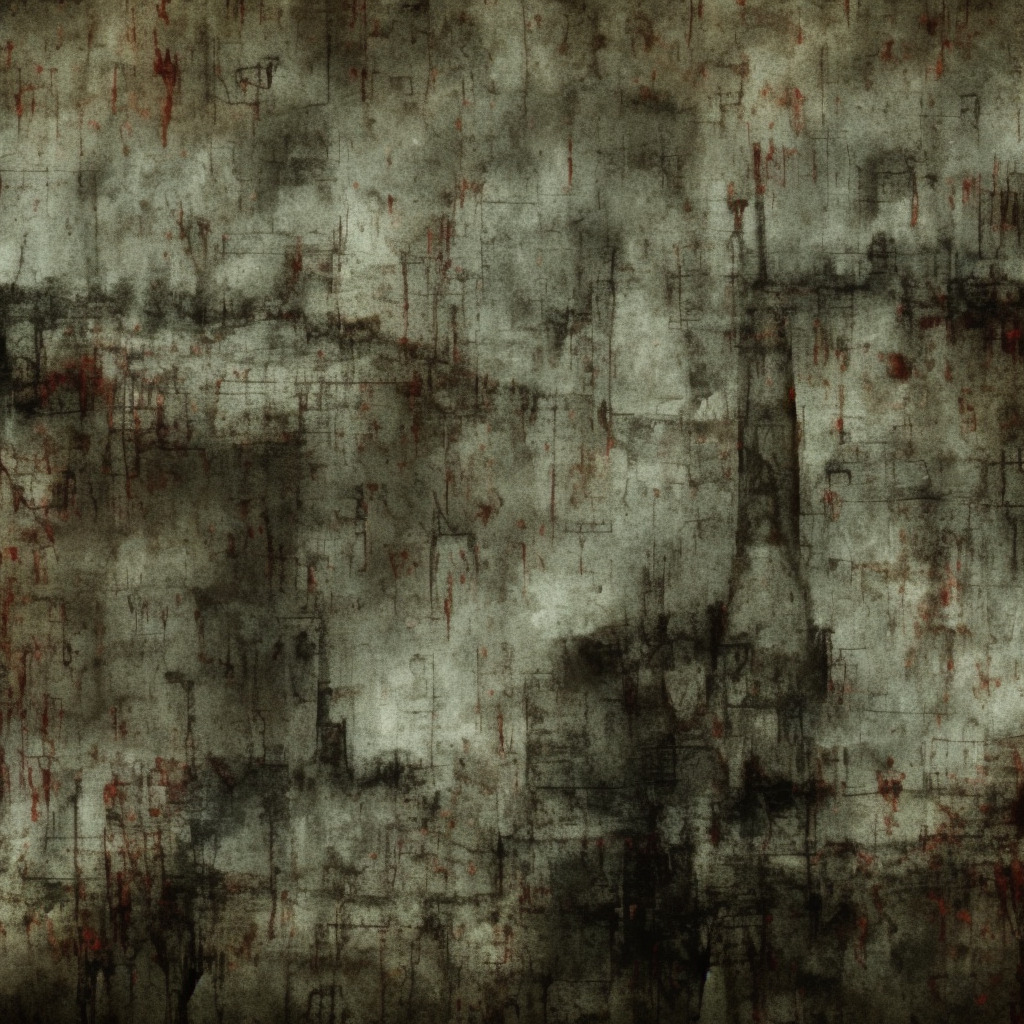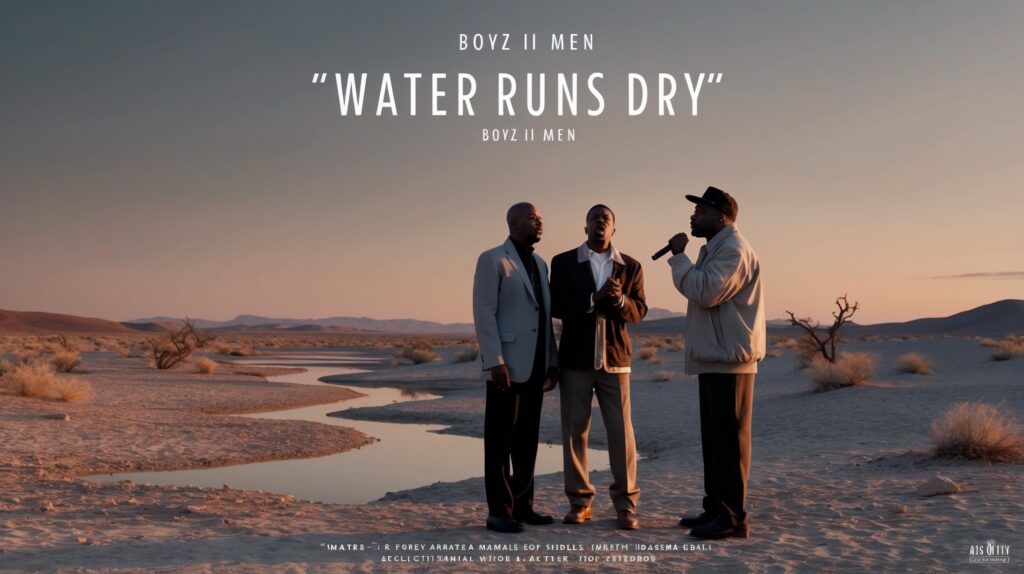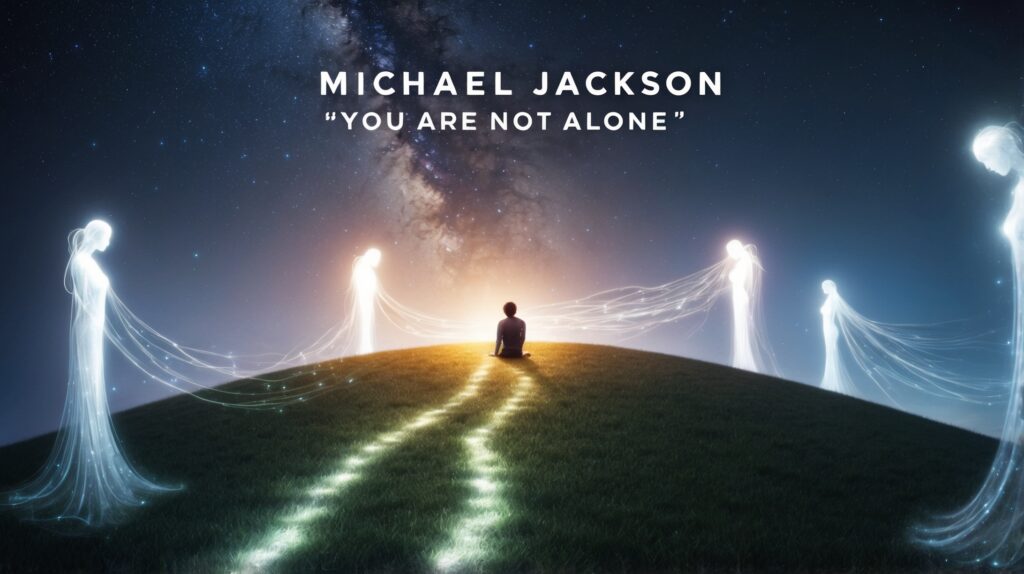Pearl Jam: An Unyielding Voice in Rock Music
Pearl Jam, a cornerstone of the grunge era, gained immense popularity with their emotive and introspective songwriting. “Black” highlighted their lyrical depth, firmly establishing the band’s legacy amid the 1990s rock scene.
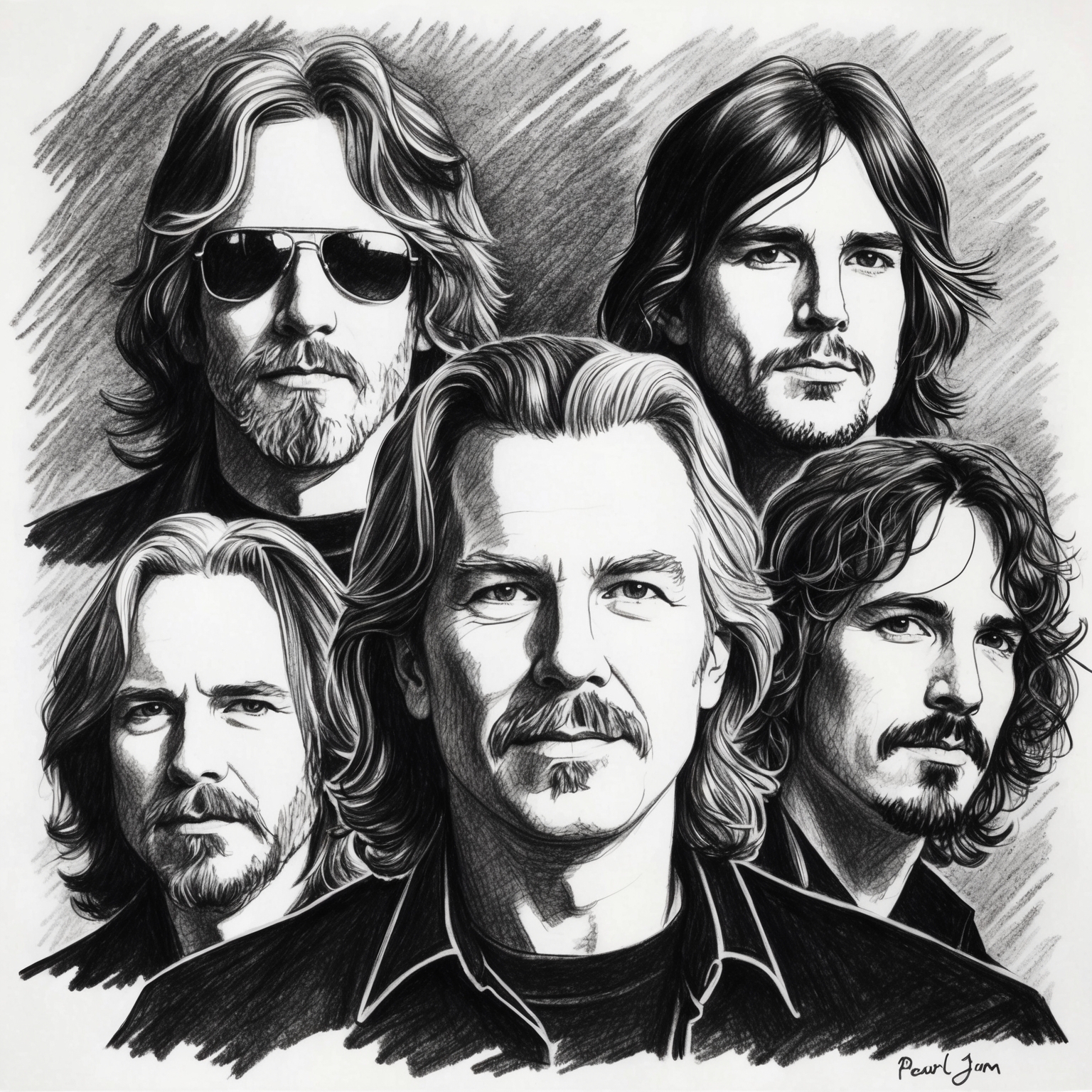
Pearl Jam, one of the enduring pillars of rock music, emerged from the post-grunge era of the early 1990s with a voice that resonated deeply with a generation of music lovers. While the band had already garnered a dedicated following with its debut album, it was the release of their second single, “Black”, that underscored their songwriting prowess and powerful emotional depth. The song became a defining moment in the band’s career, showcasing the raw, heartfelt lyrics that would become a hallmark of Pearl Jam’s music.
Pearl Jam was formed in Seattle, Washington, in 1990, right at the heart of the grunge movement. The core lineup included Eddie Vedder on vocals, Mike McCready and Stone Gossard on guitars, Jeff Ament on bass, and Dave Krusen on drums. Each member brought their unique influences, melding punk, classic rock, and hardcore into a new sound. Eddie Vedder, with his iconic, baritone voice, became the avatar of the band’s lyrical themes, often drawing from personal experiences to craft songs that were intensely introspective and socially aware.
By the time “Black” was released as part of the band’s debut album, “Ten”, in 1991, Pearl Jam was already starting to gain momentum. The song itself, though never officially released as a single, became a cornerstone of the band’s live shows and an integral part of their identity. In an era dominated by grunge, Pearl Jam stood out for their sincerity and authenticity, offering a respite from the cynical tone of much of the period’s music. Their commitment to artistic integrity and social causes remains a significant part of their legacy today.
The Craftsmanship of Pearl Jam’s Eddie Vedder and Co.
Eddie Vedder’s role in composing “Black” reveals his profound ability to fuse introspective lyrics with powerful melodies, making the song an emotive masterpiece.

Background and Career: At the heart of the classic Pearl Jam song “Black” is the band’s frontman, Eddie Vedder, who played a pivotal role in the song’s composition. Born in Evanston, Illinois and raised in the San Diego area, Vedder’s unique approach to music developed during his early years, immersed in the punk rock scene. Prior to joining Pearl Jam, he was involved with several other bands, honing his songwriting and performance skills. His eventual move to Seattle in the early 1990s served as a significant turning point, as he became the frontman of a band that would soon become an emblem of the grunge movement. Musical Style and Influences: Vedder’s musical style is deeply rooted in the raw, emotive essence of rock, blended with the lyrical depth akin to the confessional style of songwriting. He draws influence from legendary artists such as The Who, Neil Young, and Bruce Springsteen. These influences are evident in the emotional intensity and poetic nature of his compositions, which often explore themes of identity, introspection, and longing. His ability to marry emotionally charged lyrics with haunting melodies is a hallmark of his style, and “Black” is a quintessential embodiment of this. Role in the Song’s Creation: In “Black,” Vedder’s role was instrumental, with his haunting vocals and heartfelt lyrics taking center stage. Although the initial music was composed by guitarist Stone Gossard, it was Vedder’s poignant lyrics and vocal renditions that elevated the track to its iconic status. His introspection and genuine delivery in each line created a personal narrative that resonated deeply with the audience, making “Black” not just a song, but an emotional experience. His contribution to the song’s creation played a significant role in its lasting impact, proving the power of authentic songwriting in connecting with listeners.
Celebrated Covers and Cultural Impact
Black by Pearl Jam has received widespread acclaim, inspiring numerous covers and featuring in various media, thus cementing its place as a cultural touchstone.
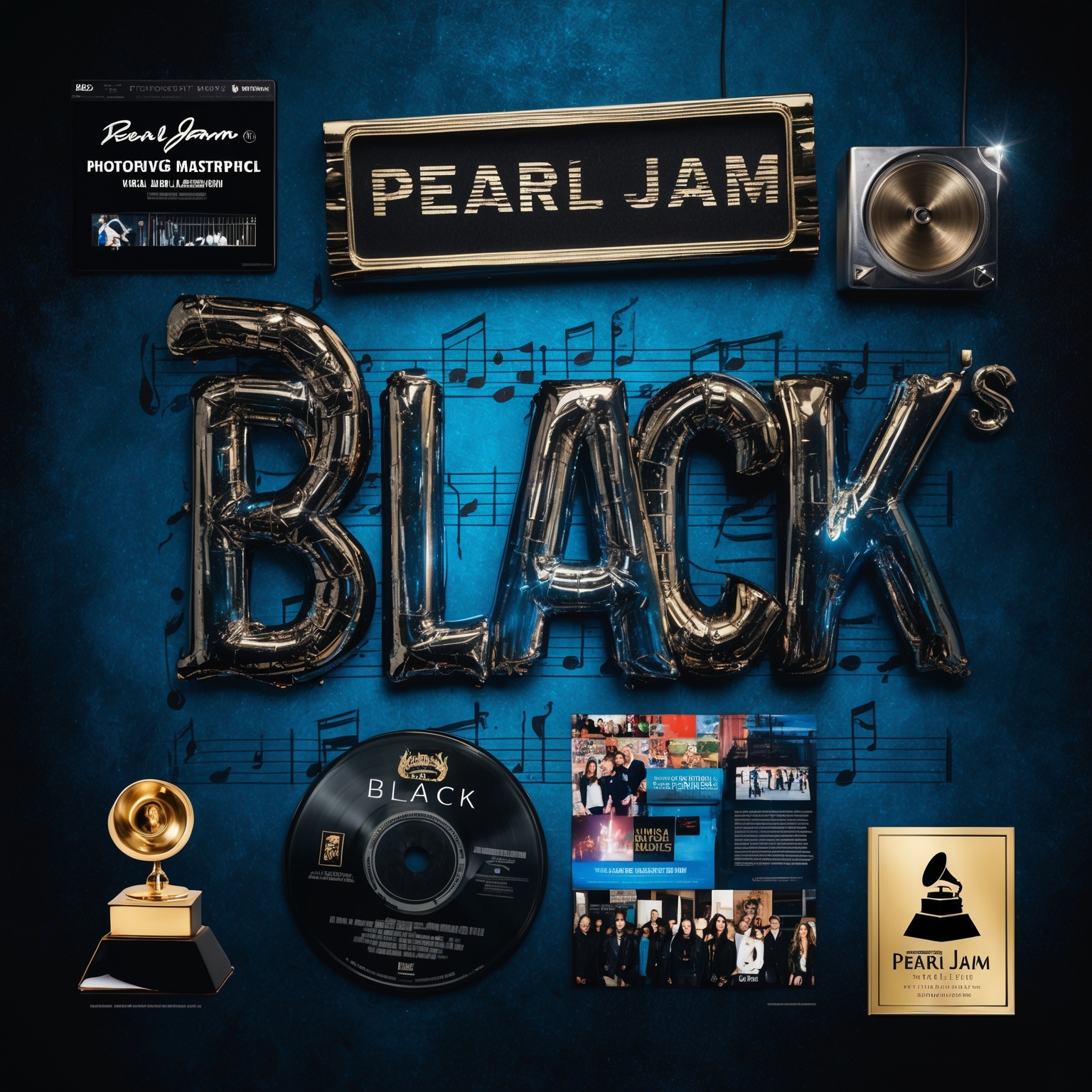
Black by Pearl Jam is not just a song; it’s a cultural phenomenon that has resonated with audiences and artists alike. While it wasn’t released as a single, it has garnered a wealth of accolades through its emotional depth and timeless melodies. Although the song itself hasn’t clinched traditional awards, its acclaim is evident in its lasting popularity and artistic influence. Critics and fans often cite Black as one of Pearl Jam’s finest works, contributing significantly to the band’s iconic status in the world of rock music.
The track’s haunting beauty has inspired numerous covers by artists across various genres, demonstrating its wide-reaching impact. Notable covers include renditions by Staind, Aaron Lewis, and the American singer Tall Heights, who have each brought a unique interpretation to the song while remaining true to its emotional core. These covers further underline the song’s versatility and timeless appeal, continuing to attract new listeners and expand its influence.
Beyond covers, Black has permeated popular culture through its inclusion in movies, TV shows, and even video games. Though Pearl Jam is famously selective about licensing their music for such uses, the song’s presence in media highlights its emotional resonance and the universal themes it tackles, such as love and loss, making it a fitting backdrop for poignant scenes. Its cultural footprint is a testament to the song’s enduring legacy and the lasting connection it creates with listeners across different platforms and generations.
The Chart Journey of Pearl Jam’s “Black”: A Testament to Timelessness
Explore the unconventional chart journey of Pearl Jam’s “Black,” a track that defied traditional chart success but became a fan favorite and a timeless classic nonetheless.

Upon its release, “Black” by Pearl Jam was more than just a track from their debut album, ‘Ten’ — it was an emotional powerhouse that, interestingly, never saw a traditional chart climb in the way many hits do. Released as part of the album in August 1991, the song was not issued as a commercial single, which technically disqualified it from appearing on the US Billboard Hot 100. Nonetheless, it garnered massive radio play and listener support, which speaks volumes about its organic reach and enduring allure.
This absence from the Billboard Hot 100 did not hinder its popularity. It became a staple on rock and alternative stations, propelling ‘Ten’ to climb the album charts over time. While other singles from the album like “Alive” and “Even Flow” occupied official chart positions, “Black” thrived in the shadows, becoming a cherished classic among fans. Its popularity at live shows only solidified its status, often being one of the most anticipated performances by fans and consistently noted as a highlight in critical reviews of their tours.
Looking at its broader impact, “Black” arguably influenced the trajectory of Pearl Jam’s career profoundly. Though not a commercial single, the song helped cement the band’s reputation for powerful and heartfelt songwriting. It showed critics and fans alike that Pearl Jam was more than capable of producing timeless music that resonated deeply on an emotional level, setting the stage for future releases. Alongside its peer tracks, “Black” played a significant role in bolstering the sales of ‘Ten,’ which remains one of Pearl Jam’s most successful albums to date, reflecting the song’s economic and cultural impact.
Visual Interpretations and Creative Homages
Black’ by Pearl Jam lacks an official music video, but its emotional performances and fan-made videos continue to enhance its legacy, providing visual depth to the song’s themes of love and loss.

Black by Pearl Jam is a song that doesn’t have an official music video, yet its profound impact on fans and the music industry is undeniable. This absence hasn’t stopped admirers from creating their own visual renditions, often inspired by the evocative and emotional journey the song provides. From live performance videos to fan-made tributes, the song’s powerful imagery is brought to life in a variety of unique ways.
During Pearl Jam’s live performances, the raw emotion and intensity of ‘Black’ are palpable. The band’s onstage energy serves as a visual feast that captivates audiences worldwide, often leading these live versions to become the de facto ‘music video’ experience for fans. The haunting visuals of Eddie Vedder passionately delivering the song alongside the equally emotive instrumentals contribute significantly to its enduring popularity.
Fan videos for ‘Black’ are creative interpretations that often seek to distill the song’s themes of love, loss, and yearning into visual stories. These homages are numerous across different platforms, demonstrating the song’s deep resonance with listeners. Through animations, abstract visuals, or personal narratives, fans have continuously expanded the song’s visual legacy, inviting new listeners to explore its depths through these creative expressions.
Analyzing the Intricate Musical Blueprint of ‘Black’
Black’ intricately weaves emotion with complex musical elements, presenting a powerful ballad within Pearl Jam’s early musical exploration.

‘Black’ by Pearl Jam is a soulful ballad that captivates listeners with its rich tapestry of sound and emotion. The song is primarily written in the key of E major, which lends itself to the melancholic yet hopeful undertone that permeates the track. The song’s chord progression features the use of G5, A, and Cmaj7 chords, alongside more intricate chords that enrich its harmonic complexity. This carefully crafted structure supports the emotional intensity that fuels its lyrics.
One of the defining characteristics of ‘Black’ is its tempo, set at a moderate pace of approximately 70 BPM (beats per minute). This slower tempo allows listeners to fully experience the depth and nuance of the song’s melody and Eddie Vedder’s poignant vocal delivery. The interplay between melody and harmony is highlighted by the use of electric and acoustic guitars, which provide a lush background against Vedder’s voice. The subtle piano parts also enhance the emotional depth of the song, making it a quintessential power ballad.
The instrumental arrangement contributes significantly to the song’s unique sound. Guitarists Mike McCready and Stone Gossard employ bluesy slide guitar techniques and arpeggiated chords, reminiscent of classic rock influences yet maintaining a modern edge. The rhythm section, featuring Jeff Ament on bass and Dave Krusen on drums, creates a solid foundation, infusing the track with a steady, rhythmic pulse that complements its gentle crescendos.
In the broader context of Pearl Jam’s discography, ‘Black’ represents a pivotal moment in the band’s early career, encapsulated in their debut album, ‘Ten’. The song’s raw emotional appeal and musical intricacy signify a maturation in their sound—a contrast to the harder-edged tracks like ‘Alive’ and ‘Even Flow’ that dominate their initial offerings. As a standout ballad, it illustrates their ability to craft profound and expressive music that resonates deeply with audiences, laying the groundwork for their subsequent explorations in sound across future albums.
Interestingly, the recording process for ‘Black’ took place at London Bridge Studio in Seattle, under the guidance of producers Rick Parashar and Pearl Jam themselves. Anecdotes from the sessions reveal that the band aimed to preserve the raw emotion of Vedder’s vocals, which were reportedly recorded in just a few takes to capture their spontaneous authenticity. This commitment to authenticity has undeniably contributed to the song’s enduring legacy.
Exploring Emotions and Themes in Pearl Jam’s ‘Black’
Delve into the emotional depths of ‘Black’ by Pearl Jam, as we explore its lyrical themes of lost love and heartache, enhanced by vivid metaphors and a poignant narrative style that resonates deeply with listeners.
Sheets of empty canvas, untouched sheets of clay
Were laid spread out before me as her body once did
All five horizons revolved around her soul, as the earth to the sun
Now the air I tasted and breathed has taken a turn, ooh
Ooh, and all I taught her was everything
Ooh, I know she gave me all that she wore
And now my bitter hands chafe beneath the clouds
Of what was everything
…
******* This Lyrics is NOT for Commercial use *******
 Pearl Jam’s ‘Black’ is a masterclass in lyrical emotion and storytelling, deeply resonating with its audience through vivid imagery and profound themes. At the core of the song, we witness the heartache and melancholy of lost love, a personal narrative communicated through powerful metaphors. The opening lines, ‘Sheets of empty canvas, untouched sheets of clay,’ set a tone of creation and potential, now left void, symbolizing a relationship that once was vibrant and full of possibility.
Pearl Jam’s ‘Black’ is a masterclass in lyrical emotion and storytelling, deeply resonating with its audience through vivid imagery and profound themes. At the core of the song, we witness the heartache and melancholy of lost love, a personal narrative communicated through powerful metaphors. The opening lines, ‘Sheets of empty canvas, untouched sheets of clay,’ set a tone of creation and potential, now left void, symbolizing a relationship that once was vibrant and full of possibility.
The song’s narrative unfolds from a first-person perspective, offering an intimate glimpse into the singer’s sorrowful introspection and nostalgia. This perspective enriches the emotional impact, as the listener travels through the singer’s memories and sense of loss. The use of metaphoric expressions, such as ‘All five horizons revolved around her soul,’ beautifully conveys the overwhelming presence and subsequent absence of a loved one, likening the relationship to a natural and essential force.
The emotional weight of ‘Black’ is further amplified by its literary prowess. The song employs a range of literary devices, such as metaphors and imagery, to paint a picture of profound emotional devastation. These elements, combined with the powerful and raw delivery by Eddie Vedder, offer a profound connection to listeners, who may find parallels in their own experiences of love and loss. Interestingly, the song takes a universal theme of heartache and elevates it through unique expressions and language that are both poetic and evocative.
Another fascinating aspect of ‘Black’ is its cultural and emotional resonance with fans, often sparking diverse interpretations and personal reflections. It’s not uncommon for fans to view the song as their personal anthem of lost love, connecting deeply with its melancholic yet beautiful narrative. Despite its heavy theme, ‘Black’ is not just a song of sadness; it’s an ode to human emotion, capturing the essence of love that can be both all-consuming and ephemeral.
? Did you know? Pearl Jam’s Black was never a single but still became a fan favorite! Its haunting melody proves that some classics need no charts. ?✨ #PearlJam #Black #MusicTrivia #GrungeLegends tinyurl.com/mrjtuc2z
Click to Tweet

